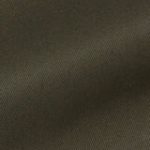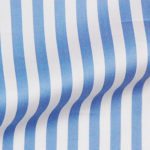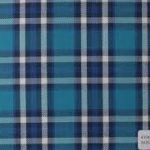Ultimate Guide To Men's Dress Shirts
How much do you know about men's dress shirts?
We all know that shirts should properly fit the body in order for us to look great in it. But what are the parts of a dress shirt and why do we have to learn about it?
This article touches on its origins and parts to include the collar, cuffs, front style, back style, buttons, and pockets. It also covers fabrics and colors with links to other useful articles.
Dress Shirt Introduction

The men's dress shirt is a button-up shirt with a collar and long sleeves. It is cut differently than the sport shirt, which is made to be worn open-necked and looks awkward with a tie.
The dress shirt is designed to carry a jacket and tie, but can be worn without one or the other or with neither. Various shirts with different sorts of collars and cuffs are appropriate for different ranges of attire, and many can run the gamut of formality.
We do not discuss the short-sleeve shirts here as that their lack of sleeves prevents them from being worn with a jacket, a prerequisite for a dress shirt.
Dress Shirt Fit
Most men wear dress shirts that do not fit them properly. By wearing a shirt that fits you properly in the neck, sleeves, chest, and stomach you will not only stand out but you will improve your appearance dramatically.
With every man having a different physical profile, it's impossible for large scale shirt manufactures to build a garments that fit everyone; they try to get around this problem by building shirts for the mythical average men.
Perhaps you've met them: Small, Medium, and Large. The result is that you end up finding a shirt with the right sleeve length, but the shoulders, neck, and chest are too large.
When you find something that fits in the chest, you find that you need another inch in the sleeves. And so you make do: don't. I highly recommend a man consider custom shirts if he wants a proper fit.
Dress Shirt Fabric
Color
A shirt's color is the first thing we notice. It can be determined a hundred feet away and may send a message that the man wearing it is outgoing or that he knows how to fit in. Neither message is better than the other, but a man who understands the role of color and its effect has control over what is being said.

White is the most common shirt color, and for good reason. Historically, it has dominated the scene, and initially was the only choice for a gentleman. The lack of color and stains on a man's collar and cuffs signified he was above working with his hands and sweating to earn a living.
It wasn't until the English began to introduce colors from their weekends and country wear that colors and patterns became fashionable. Still, white holds it's place as the most formal color; a man can safely assume a white shirt will never be out of place.
Blue came on to the shirt scene a bit later, but it's dominance of second has more to do with it's looks than heritage. Blue and colors with similar hues are especially flattering to most male complexions; thus the popularity of blue exploded in the United States as more and more off-the-rack manufactures looked for colors and patterns that would sell.
Today the color firmly holds a place as the second most popular color.
Pattern
Solid : The simplest pattern is none at all. But solid shirts are anything but simple, especially if you play with the weave. A solid white twill fabric has a very different look and feel from a solid white poplin.
In addition, by choice to go solid allows a man the option to highlight other aspects of the shirt such as a unique collar style or to focus the attention of what really matters, his face.
Stripe : Less formal that a solid, the striped shirt is a man's opportunity to add some pizazz to his outfit. Most men can't go wrong with a classic white on blue, but those who know how to dress seek to add certain accent colors such as red or pink to liven up the hues in the face.
Many people are confused about wearing striped shirts with striped ties (or pin-striped suits for that matter). The rule here is that the distance between the stripes should be different; otherwise you have the optical illusion of movement.
Check : The most casual pattern, it is the busiest pattern and the one least seen on ready made shirts. Historically, the purpose of the check was to identify and signify a wearer's background.
Today, most men are intimidated to wear such a pattern with a suit as that it appears overpowering; it needn't be, just remember not to mix like patterns; a checked shirt with a solid suit and striped tie is a great combination. Just don't wear it to meet the Queen of England.
Cotton vs Blends
The battle has been raging for sometime: on one side you have those who say that cotton is king, and you should never compromise. Others argue that there is a time and place for blends, and that many of the properties man made fibers bestow upon a blended shirt are well worth the compromise. I personally believe it depends on your needs and wants.
If you work in an air conditioned building, are price sensitive, and new to quality shirting then blends are a viable option. If you are a traveler, have plenty of money, and spend time in hot weather then cotton is perhaps a better choice. For more information on shirt fabrics in general, click here.









